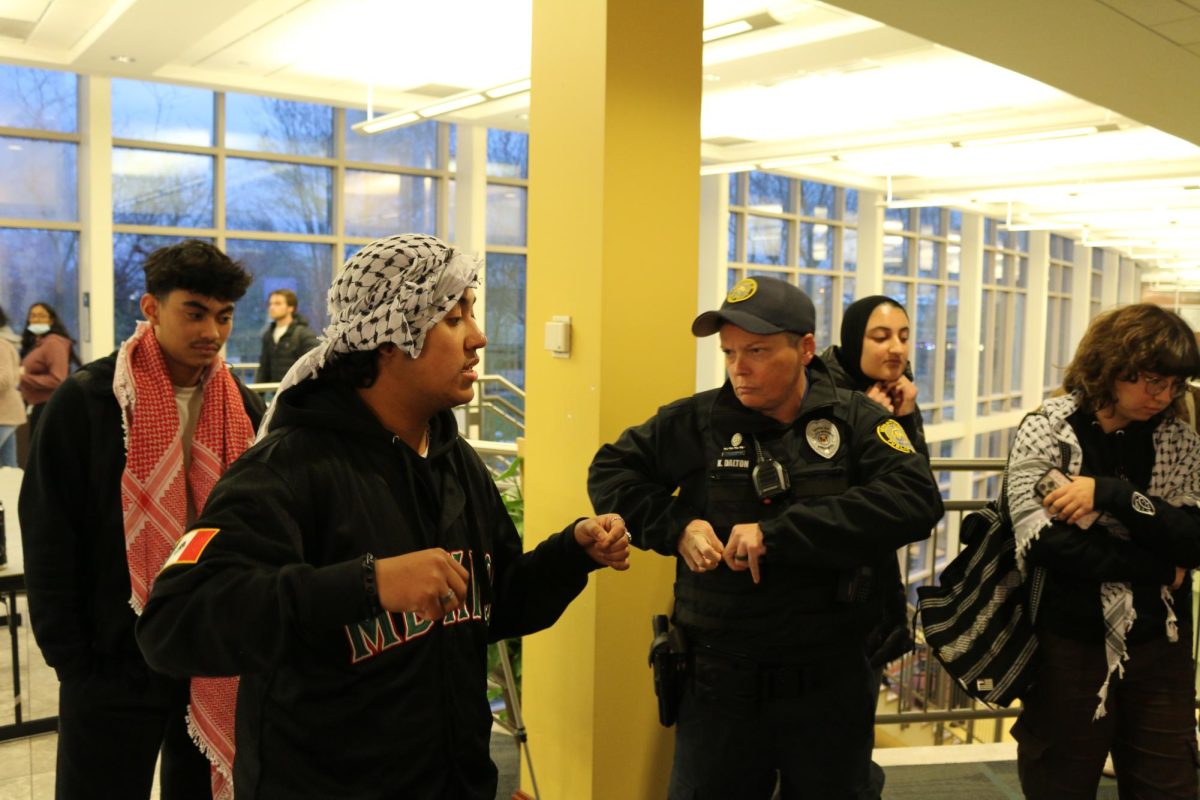Focus is on concern for victims, increased awareness and deterrence
Over the summer months, campus is typically home to freshman orientations, summer classes and college co-eds lounging at SLU Ruba. While all of these held true, this summer campus was also home to the reshaping of the sexual assault policy.
The amended policy includes more specific definitions of sexual assault and consent, and relays information in a way that students can better understand the issue.
Statistics show that not only will 1 in 5 college students be sexually assaulted, but only 5 percent of sexual assaults on college campuses are reported, according to American Association of University Women. With this number in mind, Saint Louis University has updated their sexual assault policy.
Last spring, the U.S. Department of Education issued a “Dear Colleague” letter to every university in the country, asking schools to revisit their policies after deciding that more needs to be done to address situations regarding sexual assault on campuses. Prior to receiving the letter, plans were already in the works to revamp the policy at the SLU campus.
According to the director of affirmative action and co-chairwoman of the sexual assault working group, Jennifer Scheessele, SLU’s sexual assault policy already covered much of what was mentioned in the letter.
However, she said she and her colleagues felt that a more informative and clearer policy was in order, as well as one that promotes care and concern for the victims of sexual assault on campus.
As work went underway in revising SLU’s policy, Scheessele visited “hundreds of universities” to examine their policies. Scheessele said she had to remember that SLU was unique in that there is a “Jesuit mission” that fosters “care and concern for the whole person.” With this in mind, she said she felt it important to “oversee the entire process with respect.”
“Nothing was wrong with the old policy,” Scheessele said. “It was just cut and dry in terms of reporting.”
As the team went about revising the policy, Scheessele said they felt it easier, and more effective, to “start over” and rebuild the policy. Scheessele said that the new policy provides more information than was in the original policy, and helps students understand what could happen if a sexual assault were to occur. The entire policy holds to a principle of respecting the victim and clearly stating the options one has when reporting a case of sexual assault, Scheesele said.
The director of student conduct and Scheessele’s co-chairwoman on the working group, Katherine Weathers, said that the most drastic change in the new policy is the “definition of consent.” The new policy makes it clear that consent means “an affirmative from the receiving party”. The receiving party does not necessarily have to say “no” for a case to be considered sexual assault, and silence from the receiving party is not considered an affirmative. A verbal “yes” at every stage in the process of intimacy is necessary in order to avoid sexual assault, according to the policy. Another important change to the policy an individual’s right to withdraw consent at any time.
Weathers said that while there was nothing fundamentally wrong with the former policy, it was time for a change because “we could do it better.”
“These cases are the most serious violations that we consider and we want to make sure we get it right,” Weathers said. “From the new policy comes a hope that more cases will be reported this year than in the past.”
Weathers said that the administration is trying to make students feel more comfortable in reporting sexual assaults to campus officials. She explained that whether the victim does not want to be receiving texts from a certain party, or wants the assaulting party kicked off of campus, “the reporting process provides what [victims] are looking for.”
Weathers said the new policy gives the victims both control of their situation and guidance through the process of picking different available resources
The new policy focuses on the University’s preparedness, response, recovery and prevention of sexual assault on campus, with a special emphasis on response. Typically, the first to respond to a report of sexual assault are the officers of the Department of Public Safety and Security Services. With the policy change came a shift in how responses to incidents are handled by officers.
This past summer, DPSSS officers were trained and now “have a greater sensibility,” according to Assistant Vice President of DPSSS Roland Corvington. In addition to educating the officers of the sensitivity of cases of this nature, Corvington said that DPSSS felt it important to instate a policy in which only two officers can respond to a report at a time, as to not overwhelm the victim.
Assistant Director of DPSSS Christopher Bingham and DPSS Investigator Mark Chambers helped shape the new policy, according to Corvington. Chambers is a former sex crimes detective.
Corvington said that the new policy “gives the victims options” regarding recovery of the assault. Before the policy change, he said that there was a general feeling that DPSSS needed to be more aggressive. One answer to this was the mandatory training of all officers over the summer. Corvington said the Student Government Association Safety and Security Concerns Committee were instrumental in getting the training started.
“We take sexual assault very seriously and ensure that students know that we take it seriously,” Corvington said.
Helping students to take sexual assault seriously is the new Green Dot program, which educates the community on how to become active bystanders. Case Management Coordinator of the Student Conduct Office Diana Foster said she saw a need for a bystander initiative program on campus, and went through formal training in order to bring the program to SLU. The program deals with not only sexual assault, but rather any “power based personal violence,” according to Foster
“If everyone can do something, then we are going to make a much bigger impact on our culture to reduce violence,” Foster said of the mission of the Green Dot program.
The program aims to educate and train as much of the community as possible in assault awareness.
“The more people we get knowledgeable, the more chances we have of preventing violence,” Foster said. Senior Marcel Hagens said he was made aware of the new sexual assault policy through the weekly SGA emails.
“I feel that it is relevant on this campus,” Hagens said. “There have been instances that have been made aware to me. Even if it is one instance, it is an issue.”
Junior Monica Frazier said she feels that the University has educated the community on how to prevent and respond to sexual assault.
“[SLU] had done effective programming for us to know correct protocol of what to do if [sexual assault] ever happens to us or a friend,” Frazier said. “They’re serious about it.”






Male Student • Oct 13, 2011 at 8:36 am
As much as I appreciate SLU’s efforts to cut down on sexual assault and want women to feel safer on campus, I have to say SLU got this sexual assault policy very wrong. There is no clear definition to many terms, and in my opinion it is clearly attacking men.
It says consent must be a yes throughout the entire process. How often then does the instigator need to ask for permission to progress? Every 5 minutes? After each removal of article of clothing? Who is the instigator in the situation? The person who initiates the first kiss? The person who removes clothing first? Or (as it can easily be interpreted in the policy) the person who begins the penetration? Does the man have to seek a “Yes” response for each penetration? If a male asks for a response and the woman says yes, doesn’t the woman also need to ask the man in return? The man could be doing it because he feels pressure, but still follows rules on his end and asks, but the woman never asks the man in return.
Also in the policy it is stated that with sexual assault, all that is needed is a 51% chance that it happened for you to be convicted. This policy does not follow the “Beyond Reasonable Doubt” standards that are followed in US Legal Court Settings. This I feel is the worst part of the policy. It is stating that the school can convict someone of sexual assault for literally something that “Probably” happened. A student’s future is on the line… and this policy says that if it probably happened, then that is good enough for them. How do they state what is 51%? How is it evaluated? If a woman says she was assaulted by 2 men, and the 2 men say that they did not, then by this logic couldn’t it be stated that there is only a 33% chance that it happened? 1/3 of the people said that it occurred, where 2/3 said it didn’t. This definition is far too vague and SLU is too afraid to put in the potentially offensive, yet completely necessary, information, and it clearly has adverse affects to the male population here at SLU.